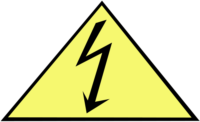CDC warns of Legionella risk from hot tubs

With the spring slate of home and garden shows not too far ahead, the CDC has issued a health alert about hot tubs – specifically those used in displays at such temporary events. According to the CDC, the hot tubs they may pose a risk for Legionnaires’ disease, a type of pneumonia caused by inhaling mist containing Legionella bacteria.
The has issued a health alert in which it warns environmental and public health practitioners about the public health need to maintain, clean and disinfect hot tubs properly to reduce potential exposure to Legionella. Environmental health practitioners are urged to work with event planners and hot tub vendors to minimize the risk of Legionella exposure even if the hot tub is only for display.
Background
Legionella grows best in warm water (77°F-108°F), like the water temperatures used in hot tubs. Warm temperatures also make it hard to keep disinfectants, such as chlorine, at the levels needed to kill bacteria like Legionella. Disinfectant and other chemical levels in hot tubs should be checked regularly. Hot tubs should be cleaned as the manufacturer recommends.
Just being in the vicinity of a a hot tub that is not adequately maintained can expose people to Legionella bacteria. This makes display hot tubs at temporary events a risk for Legionnaires’ disease if they contain Legionella bacteria. People with symptoms of Legionella exposure who have recent exposure to a hot tub filled with water should be encouraged to seek medical care.
Exposure to Legionella via aerosol or aspiration of water containing Legionella can lead to Legionnaires’ disease or Pontiac fever. Legionnaires’ disease is a severe type of pneumonia. Signs and symptoms can include cough, shortness of breath, muscle aches, headache, and fever.[1] Most people get sick within 10 days of exposure, though the incubation period can be as long as 14 days. Pontiac fever symptoms are primarily fever and muscle aches; it is a milder illness than Legionnaires’ disease, and pneumonia is absent. Symptoms begin between a few hours to three days after being exposed to the bacteria and usually last less than a week. Diagnostic and treatment information for clinicians can be found at: https://www.cdc.gov/legionella/downloads/fs-legionella-clinicians.pdfpdf icon
Hot tubs have been associated with large outbreaks of Legionnaires’ disease.[2,3] The North Carolina Department of Health and Human Services investigated an outbreak of Legionnaires’ disease associated with a state fair in September 2019. As of November 13, 2019, 139 confirmed cases (134 Legionnaires’ disease and 5 Pontiac fever) have been identified, resulting in 96 hospitalizations and 4 deaths.[4] Interim conclusions from the investigation suggest that exposure to Legionella bacteria occurred in an events center building where vendors were displaying hot tubs.[5] Their findings highlight the importance of proper operation and maintenance of devices that aerosolize water.
Recommendations for EHS practitioners
- Contact organizers of temporary events where hot tubs may be on display and operating in a public setting. Provide information about Legionnaires’ disease and proper hot tub maintenance.
- When investigating a suspected case of Legionnaires’ disease associated with hot tubs—
- Immediately turn off the hot tub and prevent its use to minimize exposure through aerosolization of water.
- If requested by outbreak lead investigator, collect water and swab samples for Legionella testing.
- Disinfect the hot tub using CDC’s recommended best practices.[6]
- Close the display and remove it from public access.
Recommendations for hot tub owners
Event planners and hot tub vendors should know about the risk that hot tubs pose when not maintained adequately, even if the hot tub is for display only. At vendor events where a hot tub is on display, the equipment vendor, display manager, or operator should—
- Obtain operator and chemical handling training, if required by state or local authorities. National training courses are listed at CDC’s Pool/Spa Inspector Training website (https://www.cdc.gov/healthywater/swimming/public-health-professionals/pool-spa-inspector-training.html).
- Ensure trained vendor staff are available at the display during operational hours.
- Maintain free chlorine (2–4 parts per million or ppm) or bromine (4–6 ppm) levels continuously.
- Maintain the pH level of the water at 7.2–7.8.
- Test pH and disinfectant levels at least twice per day.
- Maintain accurate records of disinfectant and pH measurements and maintenance activities.
At the end of each event, hot tub vendors should (in accordance with manufacturer recommendations, where applicable)—
- Clean the hot tub.
- Apply a biocidal shock treatment.
- Drain it, removing as much water from the system as possible.
- Remove filters.
- Leave filters to dry.
- Clean filters before reuse.
- Replace filters when recommended by the manufacturer.
- Protect the hot tub from external water sources (e.g., condensation drip, rain, humidity, moisture).
- Keep the hot tub as dry as possible between events.
For more information:
Centers for Disease Control and Prevention (CDC). About Legionnaires’ Disease. https://www.cdc.gov/legionella/about/index.html
CDC Vital Signs. Legionnaires’ Disease: Use water management programs in buildings to prevent outbreaks. www.cdc.gov/vitalsigns/legionnaires/index.html
Legionnaires’ Disease Fact Sheet. https://www.cdc.gov/legionella/downloads/fs-legionnaires.pdfpdf icon
Facts about Legionella and Hot Tubs/Spas. https://www.cdc.gov/healthywater/pdf/swimming/resources/legionella-factsheet.pdfpdf icon
Operating Public Hot Tubs. https://www.cdc.gov/healthywater/pdf/swimming/resources/operating-public-hot-tubs-factsheet.pdfpdf icon
Disinfection of Hot Tubs that Contain Legionella. www.cdc.gov/legionella/downloads/hot-tub-disinfection.pdfpdf icon
Model Aquatic Health Code (MAHC) Tools and Information. https://www.cdc.gov/mahc/editions/current.html
Decoding the MAHC. www.cdc.gov/mahc/infographic-decoding-lg.html
Reducing Legionnaires’ Disease in Public Spas. https://www.cdc.gov/nceh/ehs/docs/reducing-legionnaires-in-spas-508.pdfpdf icon
Model Aquatic Health Code Aquatic Facility Inspection Report. www.cdc.gov/mahc/pdf/mahc-aquatic-facility-inspection-report.pdfpdf icon
References
Centers for Disease Control and Prevention. Legionella: Signs and symptoms. https://www.cdc.gov/legionella/about/signs-symptoms.html [accessed 1 Nov 2019].
Den Boer, et al. A large outbreak of Legionnaires’ disease at a flower show, the Netherlands, 1999. Emerg Infect Dis 2002;8(1). https://www.ncbi.nlm.nih.gov/pubmed/11749746/external icon
Coetzee, et al. An outbreak of Legionnaires’ disease associated with a display spa pool in retail premises, Stoke-on-Trent, United Kingdom, July 2012. Euro Surveill 2012;17(37). https://www.ncbi.nlm.nih.gov/pubmed/22995431external icon
North Carolina Department of Health and Human Services. Investigation of an outbreak of Legionellosis in Western North Carolina. https://epi.dph.ncdhhs.gov/cd/legionellosis/outbreak.htmlexternal icon
North Carolina Department of Health and Human Services. Interim Report: Outbreak of Legionnaires’ disease associated with the NC Mountain State Fair, September–October 2019. https://epi.dph.ncdhhs.gov/cd/legionellosis/InterimReportLegionnairesDiseaseOutbreak_101819rev.pdfpdf iconexternal icon
Centers for Disease Control and Prevention. Disinfection of hot tubs that contain Legionella. https://www.cdc.gov/legionella/downloads/hot-tub-disinfection.pdfpdf icon.
Looking for a reprint of this article?
From high-res PDFs to custom plaques, order your copy today!






